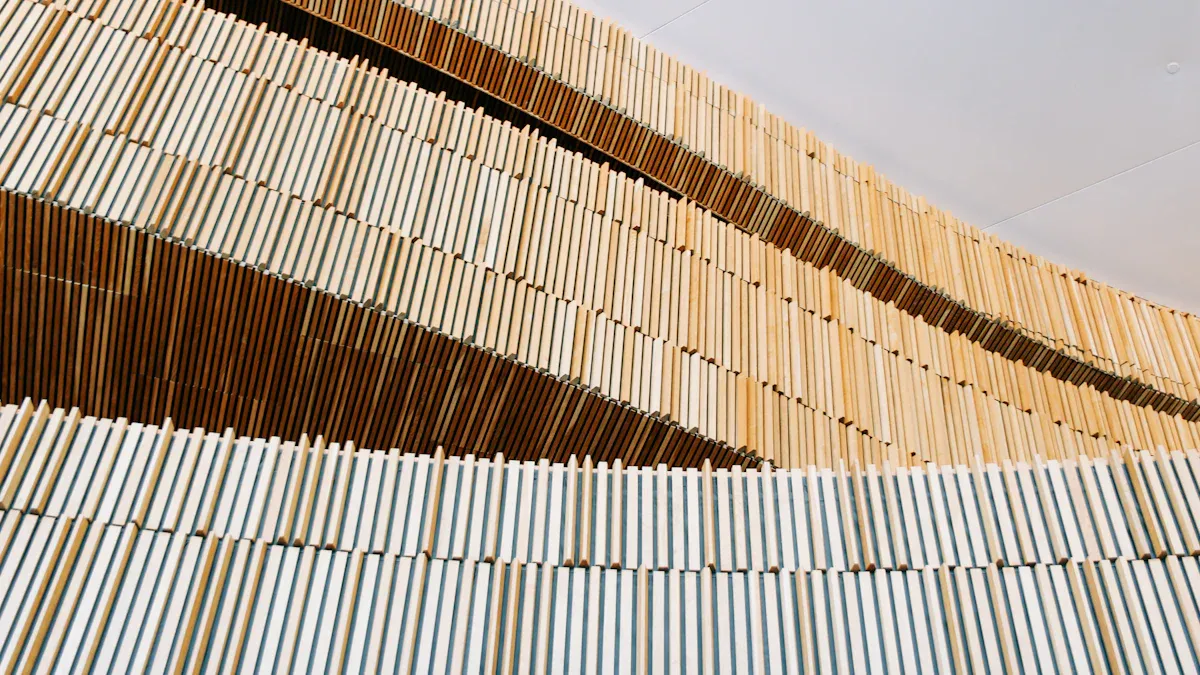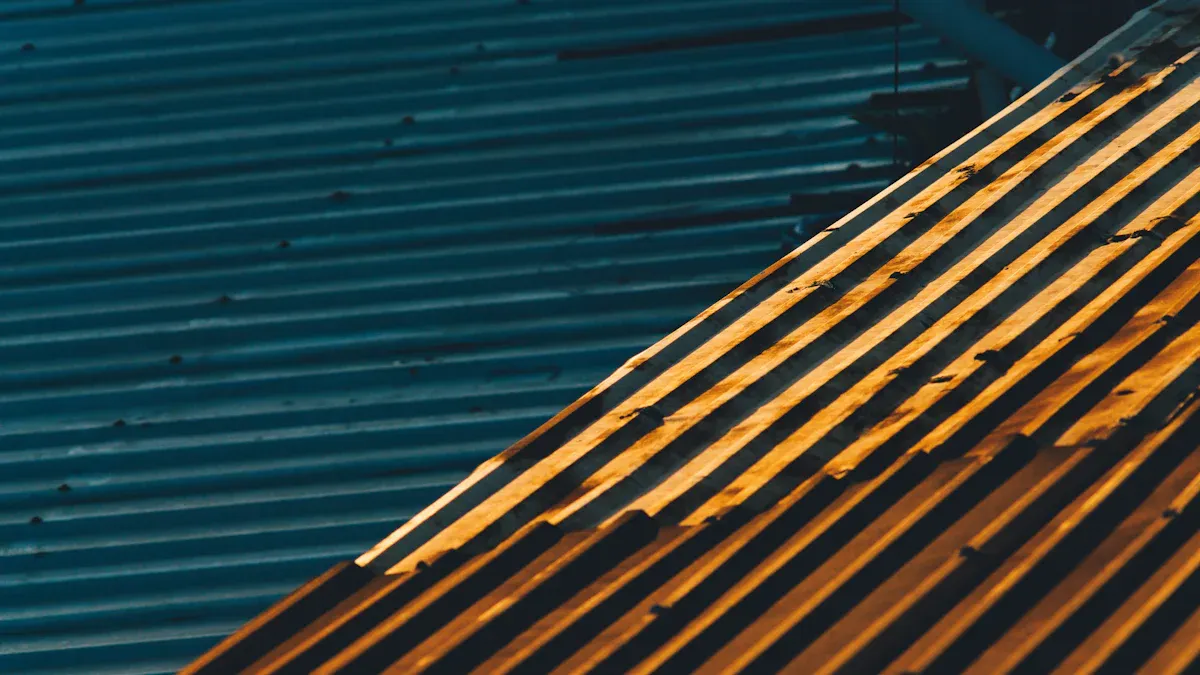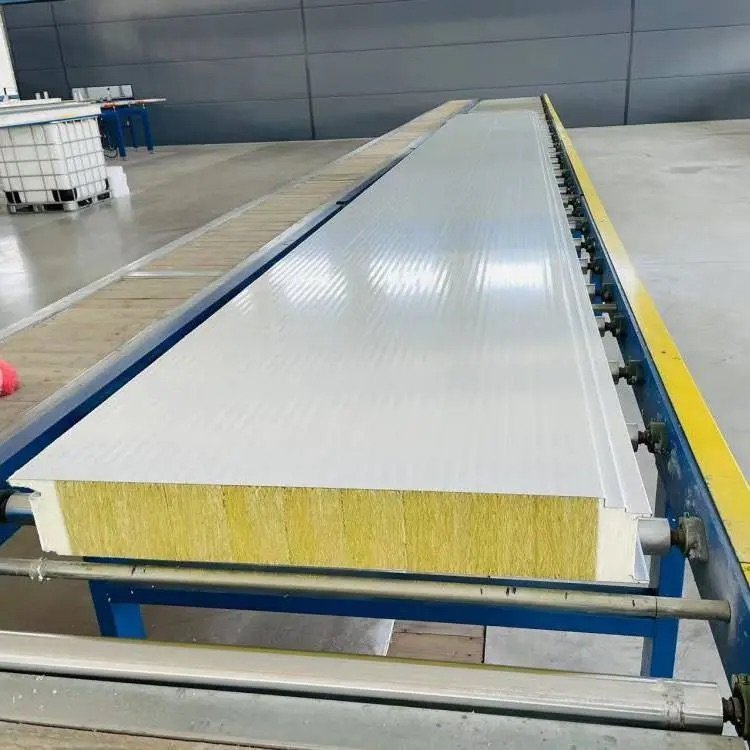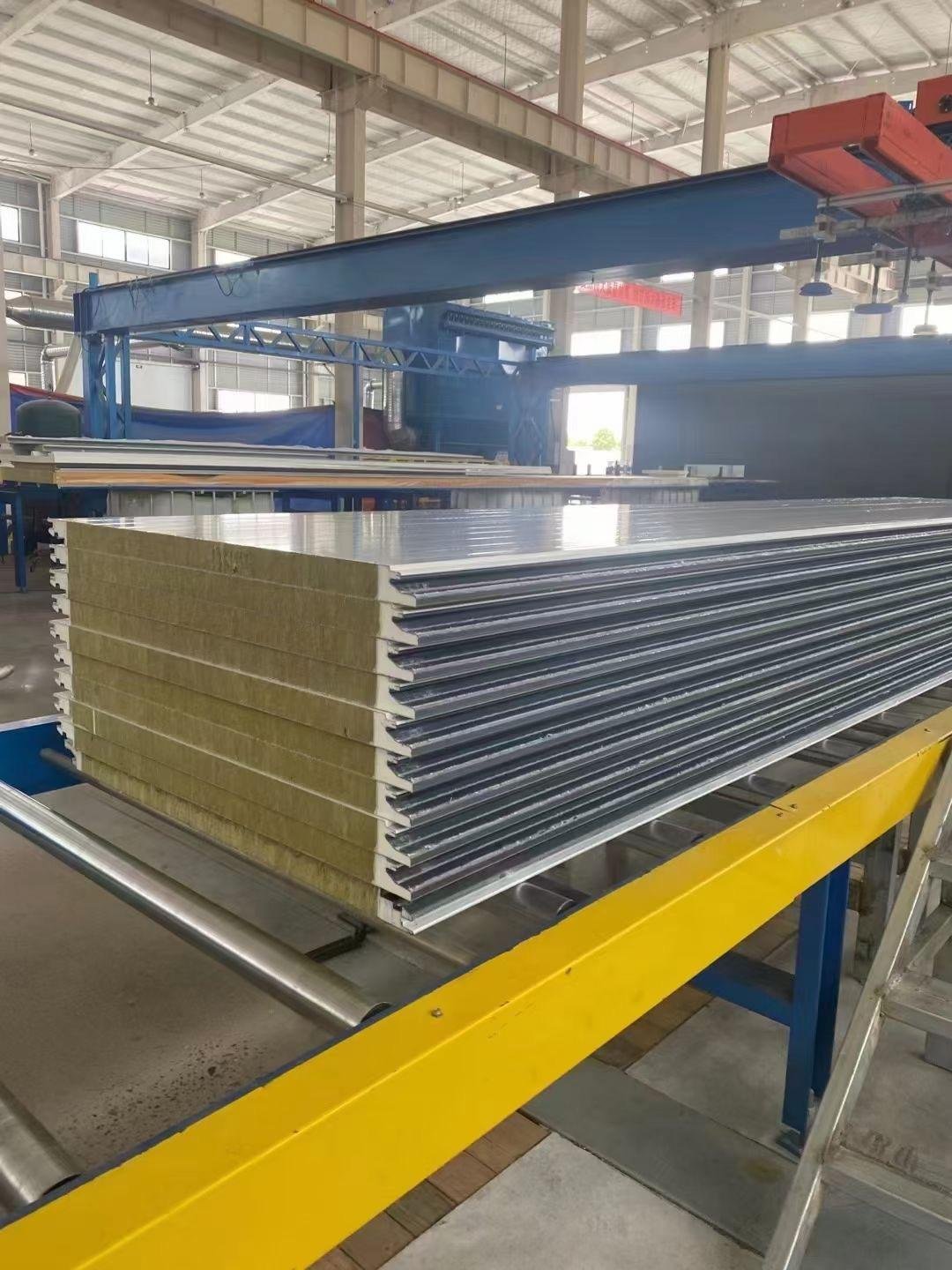
Understanding the technical requirements for sandwich panels is crucial. These panels contribute to keeping buildings safe, strong, and eco-friendly. For instance, mineral wool cores effectively stop fires and block noise, making them ideal for areas where fire risk is a concern. Steel covers are favored for their strength and durability. In wet environments, aluminum panels are preferable since they resist rust, which enhances the longevity of buildings. By selecting the appropriate panels that align with the technical requirements, you can construct safe and efficient structures that comply with today’s regulations.
Key Takeaways
Sandwich panels have two metal layers and an insulating middle. They add strength and keep buildings warm or cool.
Picking the right middle material, like mineral wool or PIR, helps stop fires and saves energy in buildings.
Sandwich panels make building faster and lower energy bills. They are a good choice for green buildings.
Installing and sealing panels well stops leaks and makes them last longer.
Choosing panels for needs like fire safety or insulation makes buildings safer and more comfortable.
Understanding Sandwich Panels

Definition and Composition
A sandwich panel is a part of a building made with two metal sheets and an insulating middle layer. The middle layer, or core, can be made from materials like polyurethane (PUR), polyisocyanurate (PIR), or mineral wool. These panels are light but strong. They provide great insulation and resist fire well. This makes them perfect for industrial buildings where safety and performance matter.
The outer layers, usually steel or aluminum, protect the panel. Steel is very strong, while aluminum is light and doesn’t rust. Aluminum works well in wet or coastal areas. The core improves insulation and fire resistance. For example, mineral wool cores are great for fire safety. PIR cores are good for keeping heat in and staying strong.
Aspect | Details |
|---|---|
Definition | A building part with two metal sheets and an insulating core. |
Core Materials | Includes polyurethane, polystyrene, mineral wool, and glass wool. |
Skin Materials | Common materials include steel and aluminum, each with unique benefits. |
Applications | Used in building construction, cold storage, transportation, and industrial sectors. |
These panels are also eco-friendly. Many are made from recyclable materials, which helps reduce waste and save energy. They are quick to install, making construction faster and better for the environment.
Role in Industrial Construction
Applications in Facades, Roofs, and Walls
Sandwich panels are important in industrial construction. They are used for facades, roofs, and walls because they work well and are flexible. Facade panels make buildings look nice and keep heat in. Roof panels protect from weather and hold weight. Wall panels stop fires and block noise, keeping spaces safe and comfortable.
Benefits of Prefabrication and Modularity
Prefabrication is a big benefit of sandwich panels. They are made in factories and sent ready to use. This saves time and money on building. Their modular design lets you adjust them for different needs, like factories or warehouses. Prefabricated panels are high quality, which is important for meeting building rules.
Tip: Using sandwich panels can help you finish projects faster and save energy.
Core Technical Requirements for Sandwich Panels
Core Materials
Types of Core Materials
The middle layer of a sandwich panel is very important. Common materials include mineral wool, PIR, and phenolic foam. Mineral wool stops fires and blocks noise, perfect for factories and schools. PIR balances heat insulation, fire safety, and strength, great for special uses. Phenolic foam keeps heat in and resists fire, often used in unique projects.
Core Material | Features | Uses |
|---|---|---|
Mineral Wool | Stops fire, blocks noise | Factories, schools |
Polyisocyanurate (PIR) | Keeps heat in, fire-safe, strong | Special projects |
Phenolic Foam | Great heat insulation, fire-safe | Unique projects |
Performance Characteristics of Core Materials
The middle layer affects heat, fire, and noise control. For example, mineral wool meets strict fire rules, used in airports and malls. PIR is light but strong, making work easier and faster.
Facing Materials
Common Facing Materials
The outer layers are usually steel or aluminum. Steel is strong and lasts long, good for tough jobs. Aluminum doesn’t rust and works well in wet places.
Durability and Weather Resistance
Outer layers must handle bad weather. Steel stays strong, while aluminum avoids rust, lasting a long time. These layers protect the middle and keep the panel working well.
Technical Characteristics
Fire Ratings
Fire safety is very important for buildings. Tests show mineral wool cores stop fire spread and delay big fires.
Thermal Insulation
Keeping heat in is a key need for panels. PIR and phenolic foam cores save energy and make buildings more efficient.
Sound Insulation
Blocking noise is also important. Mineral wool cores are great for stopping sound, perfect for noisy places like factories.
Structural Integrity and Load-Bearing Capacity
Panels must hold weight safely. Steel outer layers add strength, and light cores like PIR make building easier.
Sustainability and Regulatory Compliance
Energy Efficiency Standards
Thermal performance and energy savings
Sandwich panels help buildings save energy by keeping temperatures steady. They reduce the need for heaters or air conditioners, saving energy over time. Panels with PIR or PUR cores work well in all climates. They are light, making them easy to install and cutting construction time. This also lowers pollution during building.
Using sandwich panels supports energy-saving projects and new buildings. Their strong design reduces the need for extra materials, saving money and energy. Many panels can be recycled, which helps manage waste better. These qualities make them a smart choice for energy-efficient construction.
Contribution to green building certifications
Sandwich panels help buildings meet green standards like LEED or BREEAM. Their insulation meets energy-saving rules, helping earn certifications. Recyclable materials make them eco-friendly. Choosing these panels creates buildings that save energy and protect the environment.
Fire Safety and Environmental Standards
Compliance with fire safety codes
Fire safety is very important in industrial buildings. Sandwich panels must follow strict fire safety rules to protect people and property. Fire behavior depends on factors like panel design and fire load. Using fire-resistant materials, like mineral wool cores, is key for safety. For example, buildings with high fire loads need panels that lower fire risks.
Note: Panels with PIR/PUR cores are durable and work well in tough conditions, making them last longer and stay eco-friendly.
Use of eco-friendly materials
Construction materials impact the environment. Sandwich panels use eco-friendly materials to reduce harm. Many are recyclable, cutting waste and supporting green practices. Their light weight means less heavy machinery is needed, lowering pollution. These features make them a good choice for eco-friendly building projects.
How Technical Requirements Influence Selection
Application-Specific Considerations
Facades: Appearance and Heat Control
When picking sandwich panels for facades, think about looks and insulation. Facades shape how buildings appear and need strong materials like aluminum or steel. These materials make facades last longer and handle tough weather. Panels with mineral wool cores stop fires, perfect for tall buildings needing safety. They also keep heat in, cutting heating and cooling costs.
Tip: Pick panels that look good and save energy for better facades.
Roofs: Weather Protection and Strength
Roof sandwich panels shield buildings from bad weather. They are light, making them safer and easier to install. These panels also keep heat in, saving energy in places like warehouses. For roofs, check the slope and how much weight they can hold. Some roof panels even look like regular roofs, mixing style with function.
Application Type | Key Points |
|---|---|
Facade Sandwich Panels | Must insulate well and meet fire rules for tall buildings. |
Roof Sandwich Panels | Check roof slope, weight limits, and some mimic regular roof designs. |
Walls: Fire Safety and Noise Blocking
Walls in factories and other buildings need fire-safe panels. Mineral wool core panels are great for stopping fires. They also block noise, making them good for loud places like factories. Picking the right panels makes walls safer and more comfortable.
Cost and Long-Term Performance
Balancing Costs and Strength
Sandwich panels may cost more at first but save money later. PIR or PUR core panels insulate well and last long, cutting energy bills. Their strength means fewer repairs, making them a smart choice for industrial buildings.
Maintenance and Lifespan
How long panels last depends on their materials and care. Good materials like steel and aluminum make panels stronger and last longer. Many panels can be recycled, helping the environment. Using high-quality panels lowers repair costs and keeps buildings in good shape.
Note: PIR/PUR panels are simple to install and recyclable, making them eco-friendly and useful for industries.
Installation Considerations for Sandwich Panels

Fixing Systems
Types of Fixing Systems
Picking the right fixing system is very important. Fixing systems include visible fasteners, hidden fasteners, and interlocking designs. Visible fasteners are simple and cheap, great for factories. Hidden fasteners look nicer, often used for outside walls. Interlocking systems are easy to install and improve how panels work.
Key Benefits of Fixing Systems:
Visible fasteners: Simple to use and fix.
Hidden fasteners: Look better for outside walls.
Interlocking systems: Help with heat control and strength.
Ensuring Structural Stability
Fixing systems help keep panels strong and safe. Good installation lets panels handle wind and earthquakes. A study called “Fire Performance of Sandwich Panels in a Modified ISO 13784-1 Small Room Test” shows fixing systems improve fire safety. Another study using ASTM standards proves fasteners keep panels strong.
Study Title | Key Findings |
|---|---|
Fire Performance of Sandwich Panels in a Modified ISO 13784-1 Small Room Test | Fixing systems improve fire safety and strength. |
Developing a Lightweight Corrugated Sandwich Panel Based on Tea Oil Camellia Shell | Fasteners keep panels strong in tough conditions. |
Compatibility with Other Building Elements
Integration with Steel Frames and Other Materials
Sandwich panels must fit well with steel frames and other materials. Good alignment stops problems like heat loss, which wastes energy. Research shows adding stiffeners to walls makes them stronger and better during earthquakes. Lighter panels also handle shaking better, making them good for factories.
Key Findings | Description |
|---|---|
Stiffeners make walls stronger and safer. | |
Seismic Performance | Light panels work well during earthquakes. |
Manufacturing Efficiency | Easy to make, saving time and money. |
Sealing and Waterproofing
Sealing and waterproofing are very important for panels to last. Bad sealing lets water in, which can ruin panels. Use good sealants to keep panels tight and dry. This stops moisture and keeps heat inside the building.
Tip: Check seals and joints during setup to avoid problems later.
Matching sandwich panels to industrial needs makes them work better. These panels save energy and cut down on waste with recyclable parts. Their light weight makes them quick to install, saving time and money. This also reduces pollution during construction. Picking the right panels for your building helps make it safe, efficient, and eco-friendly. Smart choices about panels improve how buildings work and bring lasting benefits to your projects.
FAQ
What are sandwich panels used for in industrial buildings?
Sandwich panels are used for walls, roofs, and facades. They keep buildings warm, safe, and strong. These panels also block noise, making them great for factories and warehouses.
How do sandwich panels improve energy efficiency?
Sandwich panels keep indoor temperatures steady by stopping heat loss. This reduces the need for heaters or air conditioners, saving energy. Their cores, like PIR or mineral wool, are great for saving energy.
Are sandwich panels eco-friendly?
Yes, many sandwich panels are made from recyclable materials. Their light weight lowers transport pollution. They also save energy during building and use, making them eco-friendly.
How do you ensure proper installation of sandwich panels?
Pick the right fixing system, like visible or hidden fasteners. Seal and waterproof panels well to stop leaks and keep heat in. Always follow the maker’s instructions for the best results.
What factors should you consider when selecting sandwich panels?
Think about the building’s use, fire safety, and insulation needs. For example, mineral wool cores are great for fire safety. PIR cores are better for keeping heat in. Choose panels that fit your project’s needs.







